Mark Anthony Neal's Blog, page 513
June 2, 2017
A Revolutionary Basquiat?
 'The thrilling highlight of Sotheby's Contemporary Art Evening sale on 18 May 2017 was Jean-Michel Basquiat’s "Untitled, 1982." The work – purchased by notable collector Yusaku Maezawa – achieved a new auction record for the artist at $110.5 million. Watch as auctioneer Oliver Barker recounts the energy of the room and Mr. Maezawa reflects on his first impression of the stunning work and his plan to feature it as the cornerstone of his future museum in Chiba, Japan.' -- Sotheby's
'The thrilling highlight of Sotheby's Contemporary Art Evening sale on 18 May 2017 was Jean-Michel Basquiat’s "Untitled, 1982." The work – purchased by notable collector Yusaku Maezawa – achieved a new auction record for the artist at $110.5 million. Watch as auctioneer Oliver Barker recounts the energy of the room and Mr. Maezawa reflects on his first impression of the stunning work and his plan to feature it as the cornerstone of his future museum in Chiba, Japan.' -- Sotheby's
Published on June 02, 2017 06:17
Lady Soul: Aretha Franklin – Ten Albums
 Lady Soul: Aretha Franklin – Ten Albumsby Mark Anthony Neal | @NewBlackMan | NewBlackMan (in Exile)
Lady Soul: Aretha Franklin – Ten Albumsby Mark Anthony Neal | @NewBlackMan | NewBlackMan (in Exile)To date, Aretha Franklin has recorded 41 studio albums over the course of a career that began with an album Songs of Faith (1956) that was recorded in her father’s church in Detroit; she was 14-year-old. At her commercial peak in the late 1960s and early 1970s, she was one of the most recognizable Black women in the world, save Diana Ross. Surely, Ms. Franklin’s voice was a national treasure. Her career has included three distinct periods with three different labels: her earliest recordings, which remain underappreciated, were done with Columbia, while her so-called heyday occurred while on the Atlantic label; She functioned as a grand pop diva (Streisand, notwithstanding) during her two decades with Clive Davis and Arista. You could toss all 41 of Ms. Franklin’s studio albums -- and this is not to discount what two of her her live offerings, Live at the Fillmore West (1971) and Amazing Grace (1973), mean to the Culture -- and pick up any ten, and at least two might be of the finest recordings to be found within the Soul tradition (broadly defined). NewBlackMan (in Exile) pays tribute to the singular genius of Aretha Franklin with a review essay on her most significant studio albums.
Unforgettable: A Tribute to Dinah Washington (1964)
Perhaps the easy part for the young Ms. Franklin, was to find her own voice in those Washingtonian standards that she likely heard hundreds of time; That she nails, “This Bitter Earth,” “What a Diff’rence a Day Makes”, and in particular, the title track “Unforgettable” should not surprise. The revelation are those tracks, less known to the mainstream, when Washington was still traveling in the rough and tumble -- or “Rough + Black” as the fictional James “Thunder” Early once opined about the world of “Rhythm & Blues” in the film Dreamgirls -- like “Cold, Cold, Heart,” a Hank Williams original that Washington covered with a jazzy lilt in the early 1950s. The version of “Cold, Cold Heart” that Franklin sings, along with tracks like “Drinking Again” and “If I Should Lose You,” is unimaginable in a world without Aretha Franklin, which is to say, that the Queen of Soul might have been born with this record. By the time the closer “Soulsville” hits the record player, the future of Soul is more than apparent.
Runnin' Out of Fools (1964)
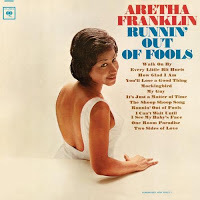 If Unforgettable was the moment that Aretha Franklin the artist was birthed, her follow up Runnin’ Out of Fools was confirmation that she could succeed with some house-party bangers. Fools is largely a collection of R&B covers, many recorded by so-called Soul-Pop stars like Nancy Wilson (“How Glad I Am”), The Temptations (“My Guy”), Inez & Charlie Foxx (“Mockingbird”), Betty Everett (“The Shoop Song”), and Barbara Lynn (“If You Should Lose Me”). Franklin sounds like she having more fun than anything -- singing the kind of songs that her barely twenty-something self liked to drag to under the blue lights in the basement -- but she straight jacks “Every Bit Hurts” from the always sublime Brenda Holloway, and gives Dionne Warwick a run on one of her signature songs, “Walk On By” (she’d do it again, a few years later with “I Say a Little Prayer”). The title track, “Runnin Out of Fools” was one of her most successful singles during her Columbia years (1960-1966), and likely was one of the tracks that convinced Atlantic’s Jerry Wexler that this Detroit “sanger” might be able to actually sell some records.
If Unforgettable was the moment that Aretha Franklin the artist was birthed, her follow up Runnin’ Out of Fools was confirmation that she could succeed with some house-party bangers. Fools is largely a collection of R&B covers, many recorded by so-called Soul-Pop stars like Nancy Wilson (“How Glad I Am”), The Temptations (“My Guy”), Inez & Charlie Foxx (“Mockingbird”), Betty Everett (“The Shoop Song”), and Barbara Lynn (“If You Should Lose Me”). Franklin sounds like she having more fun than anything -- singing the kind of songs that her barely twenty-something self liked to drag to under the blue lights in the basement -- but she straight jacks “Every Bit Hurts” from the always sublime Brenda Holloway, and gives Dionne Warwick a run on one of her signature songs, “Walk On By” (she’d do it again, a few years later with “I Say a Little Prayer”). The title track, “Runnin Out of Fools” was one of her most successful singles during her Columbia years (1960-1966), and likely was one of the tracks that convinced Atlantic’s Jerry Wexler that this Detroit “sanger” might be able to actually sell some records.I Never Loved a Man the Way I Love You (1967)
There’s a small narrative film to yet to be made about the drama associated with the initial session for Franklin’s Atlantic debut -- drunkenness, toxic masculinity, racial animus -- that would be every bit as thrilling as any southern racial drama. Until then we have the music; I Have Never Loved a Man pops with the opening lines of “Respect,”-- the album’s opener which Franklin aesthetically “heists” from its author Otis Redding -- and by the time you get to the third track, on side one, the title track, folks were pretty sure the earth done moved, to give a quick shout to the world that Ms. Franklin helped create, even for a later collaborator like Carole King, who would provide Ms. Franklin with her signature tune the next year. The two Sam Cooke songs, might could be filler, except they are Sam Cooke songs, though with “Dr. Feelgood”, “Baby, Baby, Baby”, “Do Right Woman, Do Right Man” -- and for my money, “Don’t Let Me Lose This Dream,” an icon was made.
Soul ‘69 (1969)
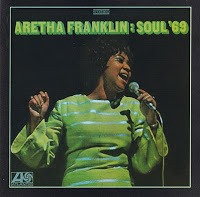
Ms. Franklin was a mere 2 when Soul ‘69, her sixteenth studio album and fifth for Atlantic, was released in January 1969. There are no hit singles on the album; even the obvious single release, a cover of Ms. Franklin’s longtime Detroit home Smokey Robinson’s “Tracks of My Tears” failed to crack the R&B top-20. But Soul ‘69 was about looking back; looking back to legends like Percy Mayfield (“River’s Invitation”), Big Maybelle (“Ramblin’”) -- and lawd, what might it have been like to hear Ms. Franklin sing Big Maybelle’’s iconic “Candy” -- and tracks like “Crazy He Calls Me”, which was recorded by both Billie Holliday ands Dinah Washington, and “Gentle on My Mind,” a hit hit for Country Music star Glen Campbell a year earlier. If Soul ‘69 is Ms. Franklin’s most obscure gem, her performance of “So Long” -- a nod to legendary Rhythm and Blues star Ruth Brown -- is the gem of her career to that point.
Spirit in the Dark (1970)
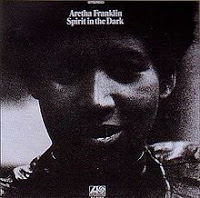 Easily one of the most recognizable Black women in the world, at the dawn of the 1970s, Aretha Franklin’s musical choices began to have the impact of illuminating the forces that influenced her. Her live recording, Amazing Grace which acknowledges figures like The Caravans, Rosetta Tharpe, Clara Ward and Thomas Dorsey, to name just a few, is the best example. As such Spirit in the Dark finds Franklin at the intersections of Gospel and the Blues. Franklin’s “Why I Sing the Blues” and “The Thrill is Gone” contributes to the moment when B.B. King becomes a mainstream artist. “Don’t Play that Song for Me,” the album’s lead single, is a thoughtful hat-tip to label-mate and Pop-Soul trailblazer Ben. E. King, whose “Spanish Harlem” would appear on a Greatest Hits compilation that Franklin releases the following year.. The revelations on Spirits in the Dark are the Franklin originals, “You and Me,” “One Way Ticket” and “Try Mattie’s,” which evidence a mastery of both learning and teaching. In the world in which Black music became Pop, Spirits in the Dark might be Franklin’s “Blackest” album.
Easily one of the most recognizable Black women in the world, at the dawn of the 1970s, Aretha Franklin’s musical choices began to have the impact of illuminating the forces that influenced her. Her live recording, Amazing Grace which acknowledges figures like The Caravans, Rosetta Tharpe, Clara Ward and Thomas Dorsey, to name just a few, is the best example. As such Spirit in the Dark finds Franklin at the intersections of Gospel and the Blues. Franklin’s “Why I Sing the Blues” and “The Thrill is Gone” contributes to the moment when B.B. King becomes a mainstream artist. “Don’t Play that Song for Me,” the album’s lead single, is a thoughtful hat-tip to label-mate and Pop-Soul trailblazer Ben. E. King, whose “Spanish Harlem” would appear on a Greatest Hits compilation that Franklin releases the following year.. The revelations on Spirits in the Dark are the Franklin originals, “You and Me,” “One Way Ticket” and “Try Mattie’s,” which evidence a mastery of both learning and teaching. In the world in which Black music became Pop, Spirits in the Dark might be Franklin’s “Blackest” album.Young Gifted and Black (1972)
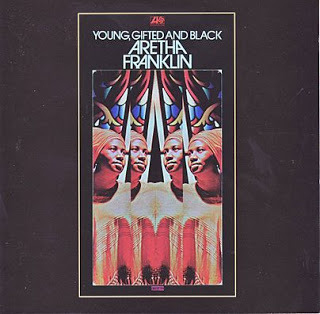 From the iconic title -- both as nod to the great Nina Simone and the generation that the song embodied -- to Ms. Franklin’s cover photo head wrap, the album gestured towards an overt political consciousness that was often left to the devices of her genius of an orator father, Rev. C.L. Franklin, and not Ms. Franklin’s music. Yet if “Young, Gifted, and Black” was Ms, Franklin’s most obvious political song -- here or anywhere else -- the album is about a freedom, that is heard in the range and arrangements found throughout. The club-banger “Rock Steady,” along with sleepy-Sunday afternoon of “Day Dreamin’” might be the album’s most memorable (both Franklin originals). And she’s surrounded by friends; Donny Hathaway plays on more than half the tracks, and while Hathaway had already authored his own signature reading of “Young Gifted and Black,” it is Billy Preston -- who apprenticed with Ray Charles and Rev. James Cleveland -- whose organ appears on the title track. Ms. Franklin’s own piano playing grounds her rollicking rendition of “Brand New Me” -- recognizable as neither the Jerry Butler original or the Isaac Hayes version that appeared months earlier, though a prescient nod the sound architects of 1970s Soul, Kenny Gamble and Leon Huff who composed the song. Casual fans, might be apt to see the album’s closing tracks as mere filling, as Ms. Franklin takes on the Beatles again (“The Long and Winding Road”), The Delfonics’ “Didn’t I Blow Your Mind” (replete with a Freddie Hubbard inspired intro) and Elton John (“Border Song”), with whom Franklin shares a birthday. It is presence of these eclectic covers that suggest that, more than any of Ms. Franklin’s previous albums, that this is the one that she wanted to make. The album earned Ms. Franklin another Grammy, yet in the fullest expression of who she had become in the world, she gave the award to Esther Phillips, who had recorded her career defining album From a Whisper to a Scream.
From the iconic title -- both as nod to the great Nina Simone and the generation that the song embodied -- to Ms. Franklin’s cover photo head wrap, the album gestured towards an overt political consciousness that was often left to the devices of her genius of an orator father, Rev. C.L. Franklin, and not Ms. Franklin’s music. Yet if “Young, Gifted, and Black” was Ms, Franklin’s most obvious political song -- here or anywhere else -- the album is about a freedom, that is heard in the range and arrangements found throughout. The club-banger “Rock Steady,” along with sleepy-Sunday afternoon of “Day Dreamin’” might be the album’s most memorable (both Franklin originals). And she’s surrounded by friends; Donny Hathaway plays on more than half the tracks, and while Hathaway had already authored his own signature reading of “Young Gifted and Black,” it is Billy Preston -- who apprenticed with Ray Charles and Rev. James Cleveland -- whose organ appears on the title track. Ms. Franklin’s own piano playing grounds her rollicking rendition of “Brand New Me” -- recognizable as neither the Jerry Butler original or the Isaac Hayes version that appeared months earlier, though a prescient nod the sound architects of 1970s Soul, Kenny Gamble and Leon Huff who composed the song. Casual fans, might be apt to see the album’s closing tracks as mere filling, as Ms. Franklin takes on the Beatles again (“The Long and Winding Road”), The Delfonics’ “Didn’t I Blow Your Mind” (replete with a Freddie Hubbard inspired intro) and Elton John (“Border Song”), with whom Franklin shares a birthday. It is presence of these eclectic covers that suggest that, more than any of Ms. Franklin’s previous albums, that this is the one that she wanted to make. The album earned Ms. Franklin another Grammy, yet in the fullest expression of who she had become in the world, she gave the award to Esther Phillips, who had recorded her career defining album From a Whisper to a Scream.Hey Now Hey (The Other Side of the Sky) (1973)
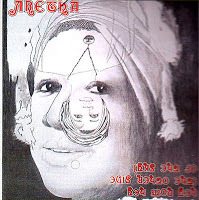 Some might recall Ms. Franklin’s Hey Now Hey (The Other Side of the Sky) as a commercial dud; it was at the time, the weakest performing of her Atlantic recordings. Hey Now Hey was quickly followed by a greatest hits package (as if to recoup the losses) speaks volumes about what the label thought of the record. To be sure it was an ambitious project -- a collaboration between Franklin and Quincy Jones (the first production credit Franklin received on one of her studio albums), in the year before Body Heat cemented Joness’ stature as the preeminent purveyor of a yet unnamed Jazz-Soul-Pop idiom, that reached it most fluid maturity with George Benson’s Give Me the The Night (1980) and Jones’ own The Dude (1981). As per her style at the time, there were Franklin originals, including surreal title track and album’s one breakthrough hit, “Angel,” which was written by Franklin’s sister Carolyn. The album’s lasting resonance is found in two covers -- drawn seemingly from radically different musical universes. Even as Franklin takes melodic and phrasing license -- and perhaps her best piano solo -- with the Bernstein and Sondheim classic “Somewhere,” one can’t help but think that “of course,” Franklin would, and should, sing the theme from West Side Story. “That’s the Way I Feel About Cha” is as much a testament to Franklin’s interpretive genius, as it is the songwriting genius of Bobby Womack. The song originally appeared on Womack’s commercial breakthrough Communication (1971). But the near closer, “Just Right Tonight,” a Franklin original with Jones, is as uncut as anything Franklin ever recorded; folk rocking on home to the line: “Oh, it was okay yesterday, baby, it oughta be just right, just right tonight / 'Cause what I got is called the good stuff / Baby, have you got a good appetite? Yeah”
Some might recall Ms. Franklin’s Hey Now Hey (The Other Side of the Sky) as a commercial dud; it was at the time, the weakest performing of her Atlantic recordings. Hey Now Hey was quickly followed by a greatest hits package (as if to recoup the losses) speaks volumes about what the label thought of the record. To be sure it was an ambitious project -- a collaboration between Franklin and Quincy Jones (the first production credit Franklin received on one of her studio albums), in the year before Body Heat cemented Joness’ stature as the preeminent purveyor of a yet unnamed Jazz-Soul-Pop idiom, that reached it most fluid maturity with George Benson’s Give Me the The Night (1980) and Jones’ own The Dude (1981). As per her style at the time, there were Franklin originals, including surreal title track and album’s one breakthrough hit, “Angel,” which was written by Franklin’s sister Carolyn. The album’s lasting resonance is found in two covers -- drawn seemingly from radically different musical universes. Even as Franklin takes melodic and phrasing license -- and perhaps her best piano solo -- with the Bernstein and Sondheim classic “Somewhere,” one can’t help but think that “of course,” Franklin would, and should, sing the theme from West Side Story. “That’s the Way I Feel About Cha” is as much a testament to Franklin’s interpretive genius, as it is the songwriting genius of Bobby Womack. The song originally appeared on Womack’s commercial breakthrough Communication (1971). But the near closer, “Just Right Tonight,” a Franklin original with Jones, is as uncut as anything Franklin ever recorded; folk rocking on home to the line: “Oh, it was okay yesterday, baby, it oughta be just right, just right tonight / 'Cause what I got is called the good stuff / Baby, have you got a good appetite? Yeah” Let Me in Your Life (1974)
Released in February of 1974, Let Me in Your Life, marks the close of Ms. Franklin’s most commercially and artistically successful recording period. Ms. Franklin pays tribute to her hometown of Detroit, offering a bluesy cover of Marvin Gaye and Tammi Terrell’s -- Nick Ashford and Valerie Simpson’s -- “Ain’t Nothing Like the Real Thing” and Stevie Wonder’s “Until You Come Back to Me,” which has the distinction of being her last real pop hit for more than a decade. Add Bobby Womack’s “I’m in Love” -- an earlier hit for Atlantic courtesy of Wilson Pickett -- and you have the makings of very solid Soul album. But it’s the proverbial B-side, where we find Ms. Franklin, perhaps at her artistic peak via a sanguine cover of the standard “The Masquerade is Over” (joined by Donny Hathaway on piano) and Bobby Goldsboro’s “With Pen and Hand.” Yet again it is Ms. Franklin’s originals -- “Oh Baby” and “If You Don’t Think” -- that sparkle, as you perhaps hear, most clearly, her ability to write perfectly for her instrument. For example, there’s a circular run that Mr. Franklin makes on the largely wordless chorus of “Oh, Baby,” where you can literally hear her discovering the full potential of her voice. There’s an argument to be made that her voice would be no finer. And then for good measure, Ms. Franklin -- slyly singing behind the beat -- drops a version of Leon Russell’s “A Song for You” that might be the equal of Donny Hathaway’s version.
Sparkle (1976)
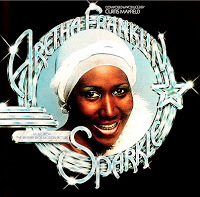 Having passed on Marvin Yancey and Chuck Jackson’s “This Will Be” -- the song that made Natalie Cole a star -- Ms. Franklin was in need of a hit album, when she recorded an album of Curtis Mayfield music for a little movie that starred a groups of twenty-something unknowns Irene Cara (Fame), Philip Michael Thomas (Miami Vice) and Dorian Harewood (Roots) and stage actress Lonette McKee. Sparkle finds Ms. Franklin and Mr. Mayfield right in the pocket, though not quite that same pocket that Mr. Mayfield created for the soundtrack for Claudine, which featured the voice of another generational Soul icon, Gladys Knight. Side A is as perfect as any side that Ms. Franklin recorded -- “Look into Your Heart” is an underrated gem -- anchored by one of the most stellar Soul ballads on Ms. Franklin’s career in “Giving Him Something He Can Feel.” Notably, Ms. Franklin’s version diverges from the film’s more brick and mortar version -- her’s is a grand artistic statement meant for all comers including Ms. Knight and Ms. Cole, both at their commercials peaks at the time.
Having passed on Marvin Yancey and Chuck Jackson’s “This Will Be” -- the song that made Natalie Cole a star -- Ms. Franklin was in need of a hit album, when she recorded an album of Curtis Mayfield music for a little movie that starred a groups of twenty-something unknowns Irene Cara (Fame), Philip Michael Thomas (Miami Vice) and Dorian Harewood (Roots) and stage actress Lonette McKee. Sparkle finds Ms. Franklin and Mr. Mayfield right in the pocket, though not quite that same pocket that Mr. Mayfield created for the soundtrack for Claudine, which featured the voice of another generational Soul icon, Gladys Knight. Side A is as perfect as any side that Ms. Franklin recorded -- “Look into Your Heart” is an underrated gem -- anchored by one of the most stellar Soul ballads on Ms. Franklin’s career in “Giving Him Something He Can Feel.” Notably, Ms. Franklin’s version diverges from the film’s more brick and mortar version -- her’s is a grand artistic statement meant for all comers including Ms. Knight and Ms. Cole, both at their commercials peaks at the time. Who's Zoomin' Who? (1985)
Who’s Zoomin’ Who? is a big ole 1980s pop album; it was released a few months after Ms. Franklin’s goddaughter and labelmate dropped her first album, and it’s not hard to discern that Whitney Houston’s breakout track, “How Will I Know” was produced by the same figure who gave us Who’s Zoomin’ Who?’s title track and one of Ms. Franklin’s last major pop hits, “Freeway of Love” (with the late E Street Band member Clarence Clemons on sax) For all intents Michael Narada Walden’s job was to make Black Arista label artists, palatable to mainstream audiences, and that he did, producing Franklin’s first platinum album. There’s as argument to be made that the follow up, Aretha (1986), also produced by Walden, is a better album, and I will make the claim that Ms. Franklin’s duet with the late George Michael, “I Knew You Were Waiting” might be one of the best singles of her career, but give Who’s Zoomin Who? its due for it significance.
Published on June 02, 2017 04:02
May 31, 2017
Marlon Peterson: "Am I Not Human?" A Call for Criminal Justice Reform
 'For a crime he committed in his early twenties, the courts sentenced Marlon Peterson to 10 years in prison — and, as he says, a lifetime of irrelevance. While behind bars, Peterson found redemption through a penpal mentorship program with students from Brooklyn. In this brave talk, he reminds us why we should invest in the humanity of those people society would like to disregard and discard.' --
TED
'For a crime he committed in his early twenties, the courts sentenced Marlon Peterson to 10 years in prison — and, as he says, a lifetime of irrelevance. While behind bars, Peterson found redemption through a penpal mentorship program with students from Brooklyn. In this brave talk, he reminds us why we should invest in the humanity of those people society would like to disregard and discard.' --
TED
Published on May 31, 2017 19:40
#UnderTheSoulCovers: “Strawberry Letter 23” -- Shuggie Otis + The Brothers Johnson
 #UnderTheSoulCovers: “Strawberry Letter 23” -- Shuggie Otis + The Brothers Johnsonby Mark Anthony Neal | @NewBlackMan | NewBlackMan (in Exile)
#UnderTheSoulCovers: “Strawberry Letter 23” -- Shuggie Otis + The Brothers Johnsonby Mark Anthony Neal | @NewBlackMan | NewBlackMan (in Exile)When Shuggie Otis’s composition “Strawberry Letter 23” appeared on his second album Freedom Flight (1971), he was most well known as the son of legendary bandleader Johnny Otis, (1971). The album which featured the teenager playing alongside seasoned session musicians like George Duke and Wilton Felder of The Crusaders, might have been long forgotten, if George Johnson of The Brothers Johnson hadn’t come across a copy of the album (he was supposedly dating one of Otis’s cousins), and suggested it to their producer Quincy Jones as a track to record.
The version by The Brothers Johnson, which appeared on their second album Right on Time (1977), became a pop hit, and is easily the band’s most remembered hit. Whereas the Brothers Johnson version captured that slick plush Soul -- Jazz -- Pop style that Jones perfected in the mid-1970s, Otis’s original feels spare and even innocent. Otis’s biggest mark, would be his third album, Inspiration Information, which found the guitarist experimenting with synthesizers and other electronic instruments, in ways that would prove inspirational to later generations of musicians such as Lenny Kravitz and Prince.
Published on May 31, 2017 18:10
A Professor Returns to the Classroom by David J. Leonard
 A Professor Returns to the Classroomby David J. Leonard | @DrDavidJLeonard | NewBlackMan (in Exile)
A Professor Returns to the Classroomby David J. Leonard | @DrDavidJLeonard | NewBlackMan (in Exile)Just off of sabbatical, when the spring 2017 semester began I was drowning. Maybe it was the election or the nastiness that is university and departmental politics. Maybe it was the deluge of academic “Ls” that is the new normal in the post-Reagan, post recession, and post-2016 academic landscape.
Sabbatical notwithstanding, I walked into the classroom apprehensive. I was distraught in that so much of my identity for close to 20 years was wrapped up in my passion for teaching. Without that love and sense of purpose anchored in my place as a teacher, I was lost.
Several months later, I feel my feet on the ground; I am walking the path I was destined to be on; I am back where I had wanted since that first guest lecture at UCSB. The other noise is still there but easier to tune out.
While this transformation has been the result of lots of soul searching and support from family and friends, this spiritual renewal is because of this past semester’s classroom experience with an amazing group of students. The students threw me a life preserver as I was drowning. My classes gave me life, reminding me of what is beautiful and meaningful. My course on the Black Freedom Struggle, and the contributions of black women within these movements, was particularly impactful. The reasons why are endless.
At a certain level, this class had every ingredient needed to make it a transformative experience. The content was inspiring, spending 15 weeks with Ella Baker, Rosa Parks, Diane Nash, Angela Davis, Assata Shakur and Shirley Chisholm, with Freedom Rides and Sit-ins, with SNCC and Panthers. This was also a class made up of student-activists, scholar-organizers, artist, and thinkers, who work tirelessly in classrooms and communities in the name of justice, empowerment, education, and equality. My students were a daily reminder of the continued legacy of the movement; a daily reminder of those committed to something bigger than themselves.
Through our classroom conversations or the ways they brought the history to life on the page or on other canvasses, the students made the class a space of learning, thinking, and “freedom dreaming” (s/o to Robin D.G. Kelley). The students’ love of history, of those who paved the way for them, as well as their respect for each other, and their collective genius, made me excited to be in class each and every day. These students will never be forgotten individually or collectively for what they taught me.
What this past semester reminded me was how much I missed post-class chats about history, the newest album to drop, sports, or campus issues; I missed having the opportunity to embrace creative assignments that allow students to showcase their talents and analysis in a myriad of ways. I missed being in a community that transcends the classroom walls, the syllabus, or dates on the academic calendar.
In an era of neoliberal logic where numbers and ledgers are everything, these classroom experiences are becoming less frequent. In an era of adjuncts and exploited “contingent faculty,” the beauty and possibility of collective learning has become a relic, alongside a non-bloated university administration and football coaches being paid like professors. In an era of hyper surveillance, assessment, and rewards for grant dollars, the prospects of creating a beloved classroom community are challenging. Yet, these spaces are more necessary than ever.
I am so grateful for the students I was blessed to share space with this semester. They are gifts; teachers in every sense of the word. When I walked out of the classroom at the end of the semester, I had tears in my eyes; I already missed them because they reminded me of my life’s mission and me who I am.
+++
David J. Leonard is Professor in the Department of Critical Culture, Gender and Race Studies at Washington State University, Pullman. His latest book A Playing While White: Privilege and Power on and off the Field was just published by The University of Washington Press. You can follow him on Twitter at @drdavidjleonard
Published on May 31, 2017 17:38
Khalil Gibran Muhammad on Race + Social Difference + Big Data
'Khalil Gibran Muhammad is professor of History, Race and Public Policy at Harvard Kennedy School and the Suzanne Young Murray Professor at the Radcliffe Institute for Advanced Studies. He is the former Director of the Schomburg Center for Research in Black Culture, a division of the New York Public Library and the world’s leading library and archive of global black history. Before leading the Schomburg Center, Khalil was an associate professor at Indiana University.' -- The Brainwaves Video Anthology
Published on May 31, 2017 16:56
Shani Jamila: Reimagining Resistance through Art
 'Artist and cultural worker Shani Jamila shares how her family lineage and world travels shape her journey toward justice. Inspiring lessons about the social significance of art and how it can teach us to see emerge from the stories she tells. Shani is a managing director of the Urban Justice Center in New York City, where she curates exhibits and events with a human rights focus.' -- TED Residency
'Artist and cultural worker Shani Jamila shares how her family lineage and world travels shape her journey toward justice. Inspiring lessons about the social significance of art and how it can teach us to see emerge from the stories she tells. Shani is a managing director of the Urban Justice Center in New York City, where she curates exhibits and events with a human rights focus.' -- TED Residency
Published on May 31, 2017 16:48
Book Trailer: Brittney Cooper -- 'Beyond Respectability: The Intellectual Thought of Race Women'
 'Brittney Cooper is Associate Professor of Women’s and Gender Studies and Africana Studies at Rutgers University. She is a Black feminist theorist who specializes in the study of Black women’s intellectual history, Hip Hop generation feminism, and race and gender representation in popular culture. Her new book
Beyond Respectability: The Intellectual Thought of Race Women
(University of Illinois Press) examines the long history of Black women’s thought leadership in the U.S., with a view toward reinvigorating contemporary scholarly and popular conversations about Black feminism.'
'Brittney Cooper is Associate Professor of Women’s and Gender Studies and Africana Studies at Rutgers University. She is a Black feminist theorist who specializes in the study of Black women’s intellectual history, Hip Hop generation feminism, and race and gender representation in popular culture. Her new book
Beyond Respectability: The Intellectual Thought of Race Women
(University of Illinois Press) examines the long history of Black women’s thought leadership in the U.S., with a view toward reinvigorating contemporary scholarly and popular conversations about Black feminism.'
Published on May 31, 2017 15:47
Remembering The Great Poet Gwendolyn Brooks At 100
 '
A Surprised Queenhood in the New Black Sun: The Life & Legacy of Gwendolyn Brooks
, poet Angela Jackson's new biography celebrates the life and legacy of Pulitzer Prize-winning poet Gwendolyn Brooks, who wrote about ordinary black life using extraordinary language--with Karen Grigsby Bates' --
NPR Code Switch
'
A Surprised Queenhood in the New Black Sun: The Life & Legacy of Gwendolyn Brooks
, poet Angela Jackson's new biography celebrates the life and legacy of Pulitzer Prize-winning poet Gwendolyn Brooks, who wrote about ordinary black life using extraordinary language--with Karen Grigsby Bates' --
NPR Code Switch
Published on May 31, 2017 05:32
May 30, 2017
CSRPC Annual Public Lecture with Vijay Prashad
 'The Center for the Study of Race, Politics, and Culture's Annual Public Lecture features distinguished public intellectuals whose work promotes engaged thought and scholarship around the topics of race and ethnicity within the public sphere. This year the center presents Vijay Prashad with support from the International House Global Voices Program, the Institute of Politics, the Seminary Co-op Bookstores, the Center for Asian Health Equity, the PanAsia Solidarity Coalition, and Students for Justice in Palestine at UChicago. Prashad is in conversation with Adom Getachew, Neubauer Family Assistant Professor in the Department of Political Science and the College at the University of Chicago.' -- CSRPCUofC
'The Center for the Study of Race, Politics, and Culture's Annual Public Lecture features distinguished public intellectuals whose work promotes engaged thought and scholarship around the topics of race and ethnicity within the public sphere. This year the center presents Vijay Prashad with support from the International House Global Voices Program, the Institute of Politics, the Seminary Co-op Bookstores, the Center for Asian Health Equity, the PanAsia Solidarity Coalition, and Students for Justice in Palestine at UChicago. Prashad is in conversation with Adom Getachew, Neubauer Family Assistant Professor in the Department of Political Science and the College at the University of Chicago.' -- CSRPCUofC
Published on May 30, 2017 18:14
Mark Anthony Neal's Blog
- Mark Anthony Neal's profile
- 30 followers
Mark Anthony Neal isn't a Goodreads Author
(yet),
but they
do have a blog,
so here are some recent posts imported from
their feed.



